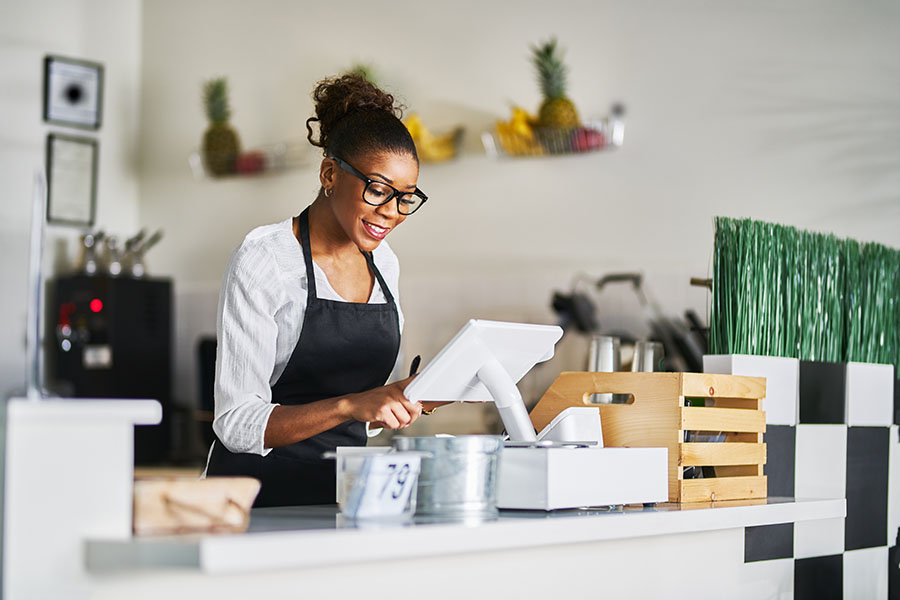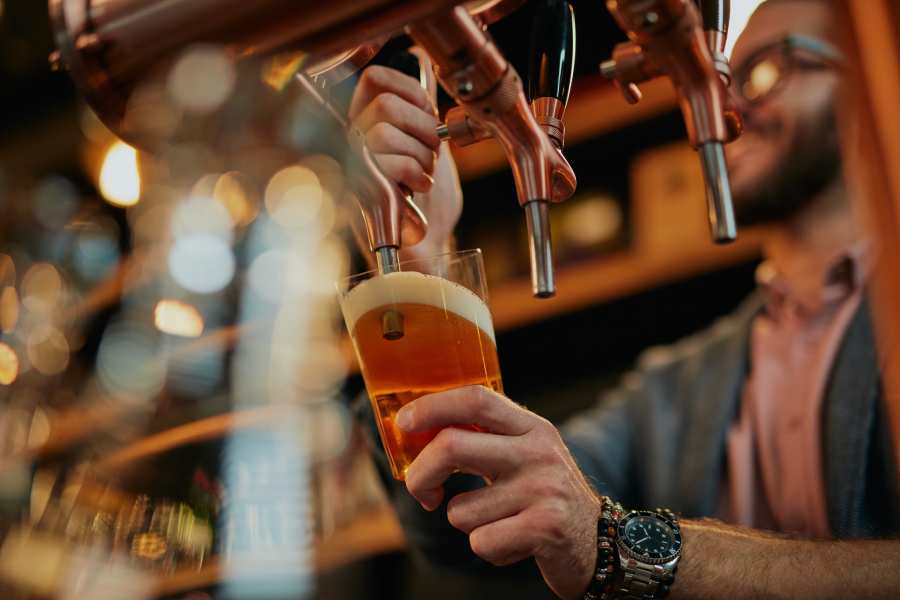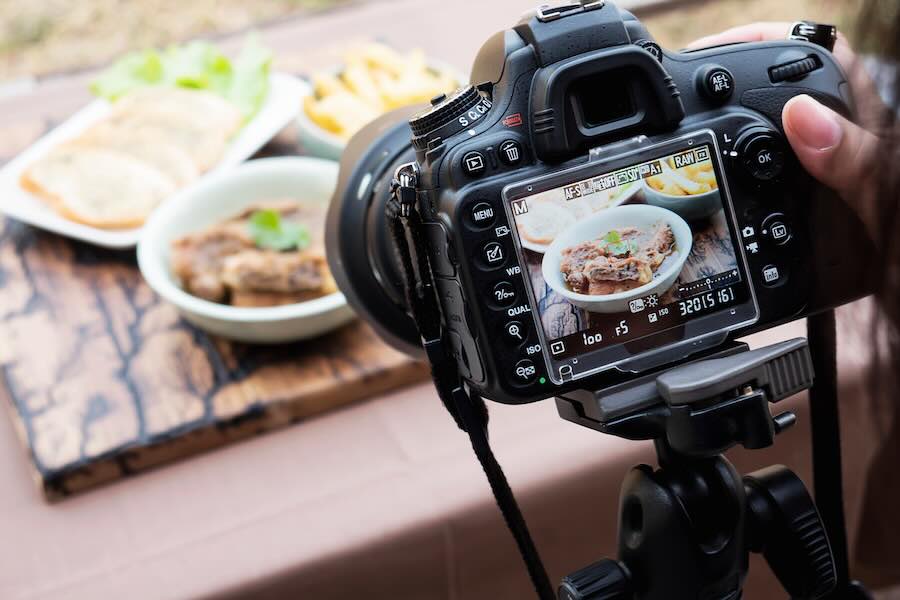
Driving sales is always the main goal for restaurant operators, as gaining new customers is crucial to staying afloat and succeeding in this highly competitive industry. While you’ll be aiming to boost your revenue, these strategies can also be meaningful ways to enhance customer experience.
In the article below, we break down how to boost restaurant sales and improve the overall dining experience in your restaurant.
Key Takeaways
- Meeting your customers through advertising and different media channels is a great way to boost sales.
- Engineering your menu to encourage combos and upselling is key to more sales.
- The best restaurant sales tips are low-cost and highly effective, like staff training, purveyor partnerships, and creating online business profiles.
1. Offer Add-ons to Your Dishes
One simple way to add more sales to your restaurant is to offer add-on options to individual dishes. Add-ons are items that can be paired with a particular dish or ingredients added to a dish to enhance its flavor. Some examples are an optional truffle shaving over a pasta dish or adding bacon to a burger. These options add value and a deeper flavor experience overall.
Getting customers to notice menu item add-ons is a two-step process. First, you should print add-on suggestions and prices right on the menu. Then, train your staff to verbally offer add-ons for dishes when taking orders. Trained staff that understands the menu and relevant add-ons leads to more sales.
This menu features a carbonara with an optional truffle shaving upcharge. (Source: Camillo)
2. Create Beverage Pairings
Beverage pairings are a classic way to showcase the depth of your menu—and your food and beverage blending skills—while enhancing customer experience. Traditionally, beverage pairings come in the form of wine suggested by the glass or bottle. Depending on your restaurant type, you could also suggest a cocktail, spirit, coffee, tea, or other offering that complements a dish overall.
Additionally, pairing wines with desserts or having designated wines for each course of a tasting menu are all ways to increase sales while adding value for the customer.
It is important to note that beverage pairings do not always need to be alcohol-focused. With non-alc drinks taking a more dominant portion of consumer preference, pairing non-alc cocktails with your menu items can be lucrative. In 2022, non-alcoholic drink consumption increased compared to the year prior, being most popular among Gen Z.
Beverage pairings, such as those on this menu, can elevate sales and customer experience. (Source: Entourage)
3. Collaborate With Local Producers
Collaborating with local producers on menu items creates a sense of community within your dining scene and shows a commitment to local businesses and food in an era when much of the food industry has become a commodity. It also feeds customers’ desire to try items that have a connection to the area surrounding them.
It could be as simple as using a special type of lettuce from a local farmer in a featured salad or utilizing gin made from a local distillery in an exclusive cocktail. I often see restaurants highlighting bread that is baked in local bakeries.
When customers see that you appreciate the craftsmanship of other food producers in your local area, they are more likely to try your product—especially if the brand or items are popular in the community. It also expands your brand to new customers; friends, family, and fans of your partner purveyors will likely make purchases from your restaurant. With 65% of customers stating they prefer local restaurant food over chains, it is wise to keep incorporating and building menus within your community.
4. Build an Engaging Social Media Presence
Building an engaging online social community across different platforms yields more exposure and more traffic to your business. Social media is a great way to show customers and prospective customers the many delicious creations you have to offer. In fact, 72% of customers make informed decisions about which restaurants to visit through Facebook. Additionally, different topics such as events, dinner specials, different menu offerings, and collaborations can all be communicated through social media.
In terms of platforms, Instagram is a no-brainer, as it is a visual medium where well-crafted food and drink photos can be shared. Facebook has the option of building groups and sharing text-focused messages with customers. Both are excellent tools for gaining notice in your community and showing off crave-able and desirable dining experiences through content.
Independent restaurants get a lot of love from their customers on TikTok. (Source: TikTok)
TikTok is also a useful social media platform for restaurants. Fifty-five percent of users visit a restaurant after learning about its diverse menu offerings on TikTok. Increasingly, younger diners also rely on TikTok to search for restaurants and get a feel for its interior and menu before they visit.
Plenty of restaurants have gone viral on TikTok via posts from customers. If you have engaging food and atmosphere, you should check TikTok regularly to monitor your restaurant mentions, but you may not need to create a posting strategy yourself to gain popularity on the platform.
5. Host Themed Events
Hosting themed dining experiences can be a great way to attract new customers. I have worked at restaurants that held events highlighting the bounty of ingredients from the start of a season or a meal focused on pairing wine with a local winery. Themed events can be ticketed and include menus that are lower-cost but provide higher overall margins. Additionally, these events can highlight your teams’ skills, incentivizing customers to come back for a more traditional dining experience.
Events do not need to be limited to dinners or prix-fixe-themed options. You could host cooking classes (you can even invite other local producers to teach), graduation dinners, business events, or tastings for different local beverage producers. Offering events allows customers to experience your brand. This can lead to other event opportunities and will generally give your business the reputation of a gathering place in the community.
Events such as tastings can draw prospective customers to your business. (Source: Pinterest)
6. Offer Online Ordering
Online ordering is one major aspect of modern restaurant sales. It increases sales by letting you expand beyond the in-person space you have. Thus, online ordering is a major unlock for restaurants with limited seating capacity or those whose dining rooms tend to fill up too fast. Additionally, post-pandemic customer behavior has increased demand for online ordering more than ever before.
To offer online ordering, it is best to focus on food that is durable, even after being held in a container for some time. Tailoring your online menu to food items that are efficient to make and easily assembled for your staff makes offering online ordering less of a burden while also driving sales into your business.
A variety of tools and platforms can help facilitate online ordering. These can be set up in-house or executed through a third-party delivery service.
7. Work With a Ghost Kitchen Company
One way to increase restaurant sales is by offering your services to a ghost kitchen company. During the past few years, I have encountered many different restaurants cooking food for different brands that are sold exclusively on online ordering platforms. A company or entity will pay or offer a share in revenue to a restaurant in return for that restaurant accepting and preparing orders under a separate brand or entity.
This is specifically good for restaurants with slower seasons or those with staff to help fulfill the orders generated from a ghost kitchen. Food sold for such concepts is often simple, easy to make, and fills a specific niche. One example of this concept is Guy Fieri’s Flavortown Kitchen, which I found being produced out of a local steakhouse when scouting out restaurants in Maryland. This extra revenue channel can be very worthwhile for restaurants and is an excellent idea for boosting restaurant sales.
8. Sell Branded Products
Customers love being able to buy exclusive packaged goods and merchandise from their favorite restaurants. Selling branded products in your restaurant can be a great way to create another channel that drives sales. Below are some examples of some branded products you can consider selling for your business:
- T-shirts
- Hats
- Mugs
- Keychains
- Jars of cooking sauce
- Cans of beer (if possible)
- Soft drinks
- Freshly baked bread or baked goods
- Condiments or pickles
- Cookbooks
Branded products such as these can be made with your business’ identity in mind. They are a great option to extend the customer experience, giving them something they can take home and enjoy at their convenience. These items are also easy to just add on in a point-of-sale (POS) system, letting you integrate this purchase at the end of a meal.
Branded cookbooks can be their own collectible, additive piece to the “lore” of your restaurant. (Source: The Aviary Cocktail Books)
9. Use Email Marketing
Email marketing lets you interact directly with your customers, sending them relevant information on events, specials, and other special offerings at your restaurant. For example, a weekly newsletter can highlight menu specials or select ingredients sourced during that week and give a different glimpse into producers featured on your menu.
Most email marketing tools allow you to filter custom lists for different types of customers. So, you can send targeted messages to regular customers, customers you haven’t seen in a while, or even wine or dessert lovers.
To entice customers to sign up for your email marketing and stir up interest, offer exclusive coupons or first access to ticketed events. Email marketing can also be used to connect with customers on their birthdays or other important life milestones. Having a direct line of communication with your customers is invaluable, and email marketing is a key way restaurants drive guests into their restaurants.
Emails such as this offer customers exclusive moments that draw them into providing your restaurant sales. (Source: Beambox)
10. Optimize Your Website
One major way to attract more customers is to apply search engine optimization (SEO) best practices on your website SEO helps your website—and therefore your business—be seen first in search results. This is highly important when customers search Google for local restaurants in their area. For example, if you are a BBQ restaurant, you would want to be the first restaurant found when customers search for “BBQ restaurants in my area.”
SEO is honed through a variety of methods.
- Using keywords: Placing popular search terms on your landing pages
- Creating content: Building out relevant SEO-focused blog articles
- Using site tags: Understanding how your website tags are built out is fundamental to the success of your website. Properly placed tags will guide site visitors to key areas on your site that can drive business.
- Setting up a Google Business Profile: This free profile gives Google all the information it needs to place your restaurant in local search results.
The good news is that restaurant websites naturally include a lot of phrases that people search the internet for. Who hasn’t searched the internet for “the best chicken sandwich near me?” Once you set up your Google Business Profile and create a website with your menu, you’ll likely show up in local Google results. Working with an SEO specialist on your site can ensure you get the most out of your website, which can help your restaurant be noticed and drive more sales online and in person.
11. Build a Loyalty Program
Loyalty programs offer your customers a large incentive for repeat visits. A program like this can be as simple as a card that your staff punches out for each visit to an app designed by a POS system, which helps you track how many times your customer visits.
A loyalty program needs to offer value. When it comes to boosting restaurant sales, a focus on capturing a guest’s attention for multiple visits is the number one way to find success. Offering a free dessert, cup of coffee, entree, or side after a set number of visits is a powerful reason for a customer to return. For long-term loyal customers, even larger surprises and gestures will resonate not only with them but the people they share them with.
Even large companies like Domino’s use loyalty programs to drive sales. (Source: UpMenu)
12. Use POS Tools to Drive Upselling
One key advantage of modern POS systems is the ability to look at your guest’s order history to find patterns in what they like and what they could be open to being sold. For example, say that your regular often orders the same steak menu item each week. Coming up with a wine pairing for the steak could be a next-level hospitality experience for your guest.
Most POS systems can also log notes taken by your service staff in past visits. For example, say last Spring, your customer ordered the seasonal special that offered morels at an upcharge. If morels are in season, you can remind the customer of this and offer a dish that upsells a premium ingredient. This information and attention to detail may be tedious at first, but it is how the most successful restaurants grow their customer base and produce higher sales overall.
In casual eateries, you can program your POS to automatically suggest upsells and pairings when customers place orders, either via a cashier or through self-service order kiosks.
13. Keep Your Business Profiles Up to Date
Managing your online presence is crucial, especially when it comes to Google and sites such as OpenTable. Your profiles will share your hours of operation and other relevant information that guests may look up. If your restaurant’s hours do not reflect when you are open, it can drastically impact how many customers walk through the door.
These are some sites you’ll want to check regularly for outdated information:
- Your restaurant website: If your site is managed by a web designer or service, make sure that you can at least update menus and hours of operation yourself.
- Your Google Business Profile: The information in this profile—menu type, hours of operation, phone number, address—feeds all sorts of Google search results. So, make sure it is always accurate.
- Yelp: Many customers use Yelp when planning a meal out, so keep this profile updated.
- Third-party ordering sites: If you work with third-party sites, check regularly to ensure the menus are accurate. If you don’t partner with third-party sites, see if your restaurant was added without your consent.
- Reservation sites: If you use Resy, OpenTable, or another reservation service, check that your information is correct on their sites.
- Social media profiles: Customers may find you via Facebook or Instagram, so make it easy to turn scrolling into actual purchases by including accurate links to your website or online ordering site.
You should also ensure your website link works or is set up correctly so navigation to ordering your food is easy. Updating your menu and ensuring photos of your food and dining area are current and reflect the best state of your business are other key aspects of maintaining your online business profiles.
Your Google Business Profile is key for online search success. (Source: Cybertegic)
14. Set Up Private Dining Experiences
A popular way of boosting restaurant sales is to offer private dining experiences to larger groups of customers. Restaurants with private dining rooms often have the advantage of hosting larger customer groups, bringing in more revenue, and creating an exclusive dining experience in which items with a higher price point are more easily sold.
Exclusive dining experiences let you impress customers with a service tailored to their palates while allowing you cost and menu planning control.
15. Offer Gift Cards
Restaurant gift cards have been used for decades, mainly because they are a meal or set amount of a purchase that is paid for upfront. Gift cards can be sold physically or digitally and are a great way for fans of your restaurant to get new customers to come in and try your food. Gift cards allow your restaurant to be perceived as something to be experienced, and utilizing them to draw in new customers can lead to longer-term repeat customers.
Gift cards are also great for giving away in contests and local events or to loyal customers. They are easy and effective tools and can be used to show generosity or to give thanks. It is often the case that customers will spend more than the gift card given to them, so any incentive through a gift card is worthwhile.
16. Update Your Menu Regularly
Variety is a big driver of customer interest in any food business. A menu that is updated by season or even on an annual basis will give your diners more reasons to come back and try new culinary creations. Changing a menu is something that many successful restaurants do, especially seasonally, to account for changing ingredient costs and introduce new recipes and cooking styles into their kitchen.
When changing your menu, keep high-performing items that bring you good profit. You do not want to change your menu on a whim. Switching up your menu items should add value and help your business reach the financial and experiential goals you have set forth. By having the option to update your menu regularly, you can excite customers while tweaking it to fit your needs in the current moment.
17. Participate in Restaurant Week
Nearly every town with a dining scene has a special week to promote local eateries. Restaurant Week is often when restaurants offer set menus at a more affordable price, hoping to encourage diners toward local businesses. When done correctly, Restaurant Week can attract new guests and introduce them to the product you are selling.
Restaurant Week encourages customer activity due to the perceived deal they are receiving. If you can capitalize on this visit, you will gain more customers and encourage more spending during their visit.
Restaurant Week in Nashville, Tennessee happens the last week of February; typically a slow time in the restaurant industry. (Source: Dine Nashville)
18. Use Influencer Marketing
One great way to gain customers and increase sales is to use influencer marketing on different social media channels. It is now common for influencers on sites such as Instagram and TikTok to feature “Instagram-worthy” food content, so if your restaurant has an aesthetic to offer, then working with influencers can be a golden opportunity for you. If you have ever scrolled through social media, you will have seen countless reels, videos, and photos of your local food scene.
I live about 40 minutes outside of the city of Chicago. Last year, I kept seeing reels on Instagram of this “viral” sushi restaurant, Tanuki, within the city. Its selling point was these beautiful rolls of sushi out of a pizza box. Due to how good the food looked and how many times it came across my phone, I literally planned a day with a friend to go into the city and get this sushi pizza box. I share this to say that the posts I saw made me go to a restaurant almost an hour away—a place I would have never gone without the power of social media influencer marketing.
19. Run Advertisements Tailored to Your Customers
Keeping in line with using social media channels, running ads on Facebook and Instagram are key ways to get the attention of customers in your area. Facebook ads, specifically, are cost-effective tools for sending niche messages and deals to target customers. These tools are also user-friendly. Utilizing social media ads to alert customers of events, upcoming menu changes, deals, and other relevant info is a great way to increase restaurant sales.
20. Refine Your Dining Experience
This last tip may be obvious but can get lost in a busy restaurant. Simply refining your guest’s experience and improving upon the product you put out will increase sales in the long run. In 2024, customers expect a few key components to their experience. They want good food, a fair price, and a pleasurable space in which to dine.
All of the tips above are very useful, but they will only go so far if the core product you have to offer is lacking. By taking into account the customer experience and how they may interact with your business, even before stepping foot into the door, you give yourself the opportunity to refine the final experience in a way that encourages these customers to return to your business.
Frequently Asked Questions (FAQs)
When you’re thinking about how to increase restaurant sales, there can be some confusion if you do not have experience doing it. Below are some of the commonly asked questions about boosting restaurant sales.
One popular way to increase restaurant sales is during the reservation process. For example, if you were to book a table at The Aviary in Chicago, you would book it through Tock. When making the reservation, you have the option of pre-paying for items such as their signature Black Truffle Explosion or other experiential add-on items. Utilizing reservation systems in this way can provide sales opportunities before your customer sets foot inside the restaurant.
It can be a challenge to increase restaurant sales. This is because there are many dining options a customer can choose from at any given time. However, targeting with ads, offering a reputable dining experience, and making an effort to stand out amongst the competition are all key ways to boost restaurant sales. Your restaurant needs to be full of gimmicks to impress—often, high-quality dining experiences focused on guest satisfaction are enough.
You allow customers to spend more at restaurants by making it easy for them to do so. This comes into play with engineering your menu for ease of adding different items, training your staff to suggest products when relevant, and creating an experience that evokes a wanting for your offerings. When what you have to offer is what customers want, they will likely be willing to spend on a high-quality dining experience at your restaurant.
Bottom Line
When it comes down to increasing restaurant sales, you can use many different tools to achieve this goal. By understanding your customers and meeting them through different channels, you can effectively reach them in a way other businesses cannot. Furthermore, with effort and thoughtfulness, your menu can deliver an experience that guests are willing to spend more money on. Use the tips above to boost your restaurant sales and bring more success to your business.




